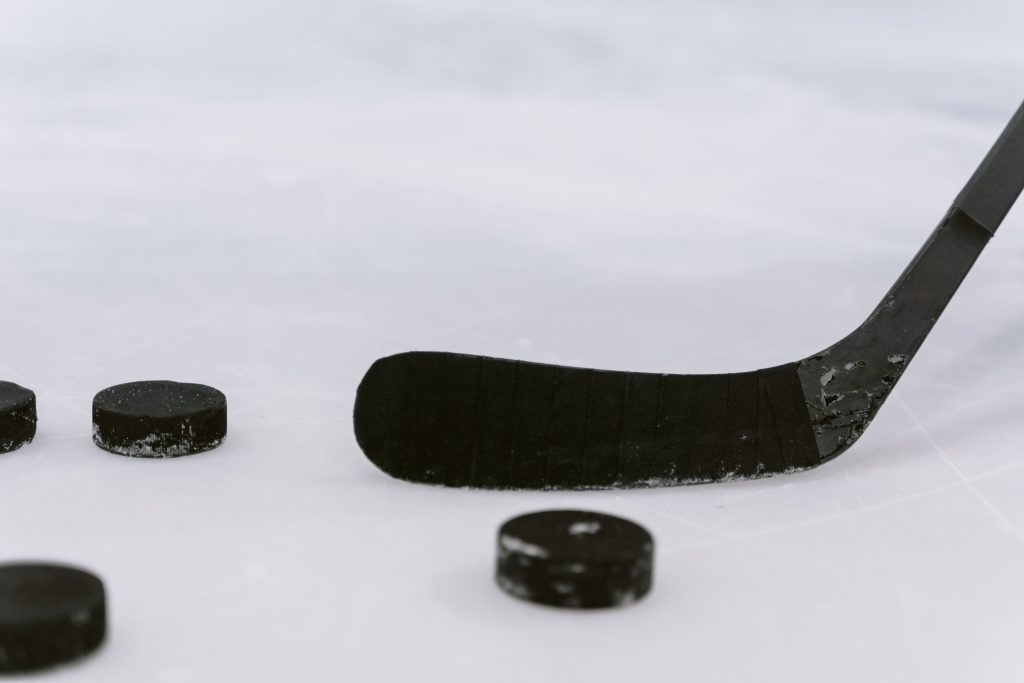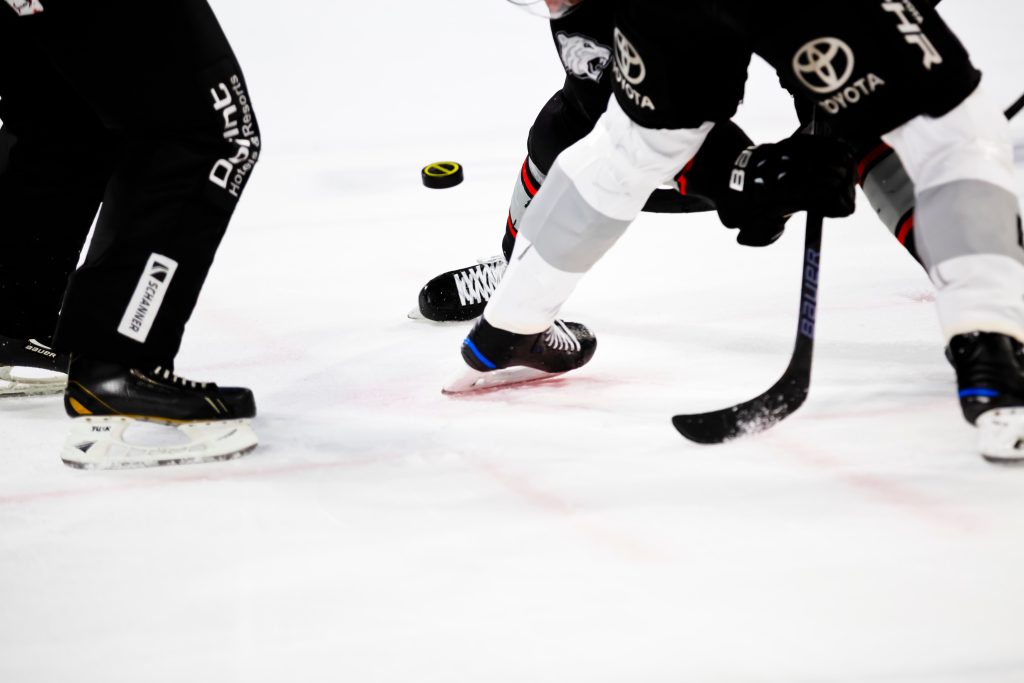Have you ever wondered how fast a hockey puck can travel on the ice?
Ice hockey is a fast-paced sport that requires players to move quickly and accurately. One of the key elements of the game is the hockey puck, a small, hard rubber disc that is used to score goals. Understanding the physics of a hockey puck and how fast it can travel is important for players, coaches, and fans alike.
In this article, we will explore the speed of a hockey puck, examining the various factors that influence its velocity and momentum. By understanding the speed of a hockey puck, we can gain a greater appreciation for the skill and athleticism required to play this exciting sport.
Table of Contents
How Fast Does a Hockey Puck Travel?
Studies have shown that the maximum speed that a puck can reach on the ice in the NHL is approximately 110 mph or 177 km/h. This is an impressive speed, and it’s a result of a combination of various factors, including the technique used by the players, their strength, and the equipment they use.
To achieve high speeds, players often use a technique called a slapshot, which involves winding up the stick before striking the puck with a sweeping motion. This technique allows players to generate a significant amount of power behind the shot, resulting in a faster-moving puck.
In addition to the technique used, a player’s strength is also crucial in generating high puck speeds. Players need to have strong arms and upper body muscles to be able to strike the puck with enough force to make it move at high speeds.

The equipment used by players, such as the stick and the puck itself, can also impact the speed of the puck. The puck used in the NHL is made of vulcanized rubber, which is specifically designed to glide smoothly on ice. It is also denser than other types of pucks, allowing it to move faster when struck by a player.
Here is a table of the 10 fastest hockey puck travels in NHL history, including the player’s name, speed, and additional information:
| № | Player Name | Speed |
| 1 | Bobby Hull | 118.3 mph |
| 2 | Zdeno Chara | 108.8 mph |
| 3 | Shea Weber | 108.5 mph |
| 4 | Dennis Wideman | 108.5 mph |
| 5 | Sheldon Souray | 106.7 mph |
| 6 | Dion Phaneuf | 105.9 mph |
| 7 | Fredrik Modin | 102.1 mph |
| 8 | Alexander Ovechkin | 101.3 mph |
| 9 | Steven Stamkos | 101.9 mph |
| 10 | Al MacInnis | 100.4 mph |
Bobby Hull is widely recognized for his powerful slap shot, and his recorded speed of 118.3 mph stands as one of the fastest shots ever recorded in the NHL. This remarkable feat occurred during the NHL All-Star Game festivities in 1969. Hull’s incredible shot showcased his exceptional strength and technique, solidifying his reputation as one of the most feared and skilled goal scorers in NHL history. His record-setting shot remains an impressive milestone that highlights his impact on the game.
The fastest recorded shot in the NHL was made by Zdeno Chara, a defenseman for the Boston Bruins, during the 2012 NHL All-Star Skills Competition. Chara hit a puck at an astonishing speed of 108.8 mph or 175.1 km/h. This record-breaking shot was made possible by Chara’s impressive technique and strength, as well as the high-quality equipment used in the competition.
Factors Affecting the Speed of a Puck
Let’s take a closer look at some of the factors that affect the speed of a hockey puck:
- The force applied: As mentioned earlier, the force applied to the puck by the stick affects its speed. This force can come from a wrist shot, slap shot, or other types of shots.
- Mass of the puck: The standard mass of a hockey puck is 6 ounces, but variations in the size and weight of the puck can impact its speed and trajectory.
- Temperature: The temperature of the ice can affect the speed of the puck. Colder ice provides less friction, allowing the puck to travel faster.
- The roughness of the ice: The roughness of the ice can also impact the speed of the puck. Rough ice provides more friction, slowing the puck down.
- Air resistance: The puck encounters resistance from the air as it travels through it, affecting its speed and trajectory.
- Spin: The spin put on the puck by the player can impact its speed and trajectory. Backspins can increase lift and decrease drag, resulting in a faster puck.
The temperature of the ice plays a crucial role in determining the speed of a sliding hockey puck. Ice is known to be a slippery surface, but the extent of its slipperiness can vary depending on the temperature. Colder ice tends to be harder and smoother, which allows the puck to slide faster and with less friction. On the other hand, warmer ice can be softer and rougher, which can slow down the puck and increase friction.
One study conducted by researchers at the University of Nevada, Las Vegas found that the speed of a sliding puck was significantly affected by ice temperature. The study found that a puck slid an average of 5.5 feet farther on ice which was -5 degrees Celsius compared to ice that was 0 degrees Celsius. This highlights the importance of maintaining a consistent ice temperature in order to ensure fair and consistent play.
Examining the Velocity of a Flying Hockey Puck
When a puck is struck with a stick, it can either slide along the ice or become airborne. The speed of a flying puck is generally faster than a sliding puck due to the absence of friction that would otherwise slow down the puck as it slides along the ice. The speed of a flying puck can be affected by various factors such as the angle at which it is struck, the force of the impact, and the trajectory of the shot. In addition, the air resistance that acts upon the puck during flight can also affect its speed.
The force of a slapshot is a key factor in determining the speed of a hockey puck. The slapshot is a powerful and popular shot used by players to achieve high speeds. The force of a slapshot is generated through the flexing of the stick, which stores energy and then releases it as the stick makes contact with the puck. The force generated by the stick depends on several factors, including the type of stick, the player’s strength, and the technique used to execute the shot.
To maximize the force of a slapshot, players typically wind up the stick behind them and then follow through with a strong and swift motion. This allows for maximum energy transfer from the stick to the puck, resulting in high speeds. However, the force of a slapshot can also be affected by the player’s accuracy and timing, as well as the type of ice surface and puck used in the game.
Does the NHL Use New Hockey Pucks for Every Game?
No, the NHL does not use new hockey pucks for every game. Instead, pucks are used until they wear out or become damaged. The NHL uses a specific brand and model of hockey puck that is manufactured to strict standards for weight, size, and hardness. The pucks are kept in a climate-controlled environment to ensure they maintain their integrity and consistency.
Before each game, the pucks are frozen to a temperature of 14 degrees Fahrenheit (-10 degrees Celsius) to ensure they slide smoothly on the ice. During the game, pucks are changed periodically if they become damaged, or chipped, or if their integrity is compromised in any way. The game officials are responsible for checking and changing the pucks as necessary.

Despite the rigorous standards and quality control measures in place, there are instances where players have complained about the quality or consistency of the pucks used in games. Some players have claimed that pucks can become too hard or too soft, affecting the way they handle and move on the ice. However, the NHL continually monitors and adjusts its manufacturing processes to ensure the pucks meet their strict standards.
Conclusion
Understanding the physics of a hockey puck and how it moves on the ice can enhance one’s appreciation for the skill and athleticism required in the game of ice hockey. By encouraging further learning about the sport, fans can gain a deeper understanding and appreciation for the game’s speed, power, and skill.
FAQ
What was the Fastest Slapshot in NHL history?
The fastest slapshot recorded in NHL history is credited to Zdeno Chara. On September 29, 2012, during the All-Star Skills Competition, Chara unleashed a slapshot that reached a staggering speed of 108.8 miles per hour (175.1 kilometers per hour). This record-breaking shot showcased the incredible power and strength possessed by the towering defenseman.
How Fast is an NHL Wrist Shot?
The speed of an NHL wrist shot can vary depending on the player and the situation. On average, an NHL wrist shot can range from around 70 to 90 miles per hour (112 to 145 kilometers per hour). However, some players with exceptional strength and technique can generate wrist shots that exceed 100 miles per hour (160 kilometers per hour) in certain instances.
Does a Hockey Puck Move Faster than a Baseball?
In general, a baseball tends to move faster than a hockey puck. The maximum recorded speed for a baseball pitched in Major League Baseball (MLB) is around 105 miles per hour (169 kilometers per hour). On the other hand, the fastest recorded slapshot in the NHL, using a hockey puck, reached a speed of 108.8 miles per hour (175.1 kilometers per hour). However, it’s important to note that these speeds can vary depending on factors such as the player’s skill, equipment, and specific circumstances of the game.
How Heavy is an NHL Puck?
An NHL puck is officially standardized to weigh approximately 6 ounces (170 grams). The weight of the puck ensures optimal performance and consistency during gameplay. This specific weight allows players to handle and shoot the puck effectively, while also providing stability and predictable puck movement on the ice.
How Fast Was Wayne Gretzky’s Shot?
Wayne Gretzky was known for his exceptional hockey IQ and playmaking abilities rather than his shot speed. While he didn’t possess the hardest shot in the NHL, his shot accuracy and precision were highly regarded. Gretzky’s success on the ice stemmed from his exceptional vision, passing, and hockey sense rather than the sheer speed of his shot.
How the Slap Shot Works in Hockey
The slap shot in hockey is a powerful shooting technique used to generate speed and force behind the puck. To execute a slap shot, the player winds up by drawing the stick back, then forcefully strikes the ice a few inches behind the puck. This action creates a flex in the stick, transferring energy into the puck upon contact and propelling it with speed and power toward the net.
What is the Average Speed of a Hockey Puck?
The average speed of a hockey puck can vary depending on various factors, including the player’s shooting technique, the situation on the ice, and the specific circumstances of the game. On average, a typical shot or pass in a professional hockey game can range from around 60 to 90 miles per hour (97 to 145 kilometers per hour). However, it’s important to note that elite players can generate higher speeds, and specific shots like slap shots or one-timers can exceed 100 miles per hour (160 kilometers per hour) in certain instances.

I’m Heorhii Rysak, a go-to sports enthusiast and blogger. My fascination with sports began in my childhood with karate, setting the foundation for my love of physical fitness. Over the years, I’ve delved into various disciplines, including martial arts and CrossFit, and developed a passion for tennis. I bring a wealth of practical experience to my blog, where I share equipment reviews, workout plans, and fitness advice. My goal is simple: to inspire and assist you in your journey toward better health and performance.